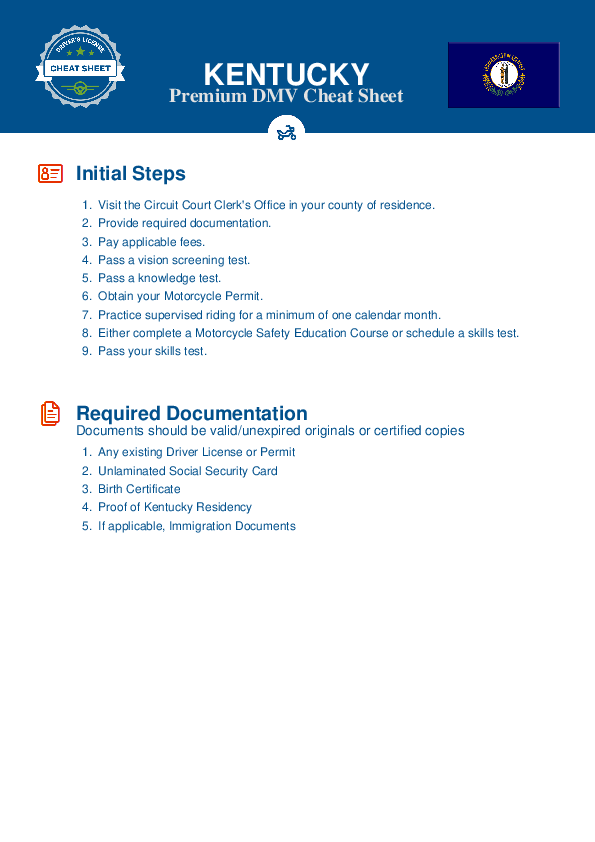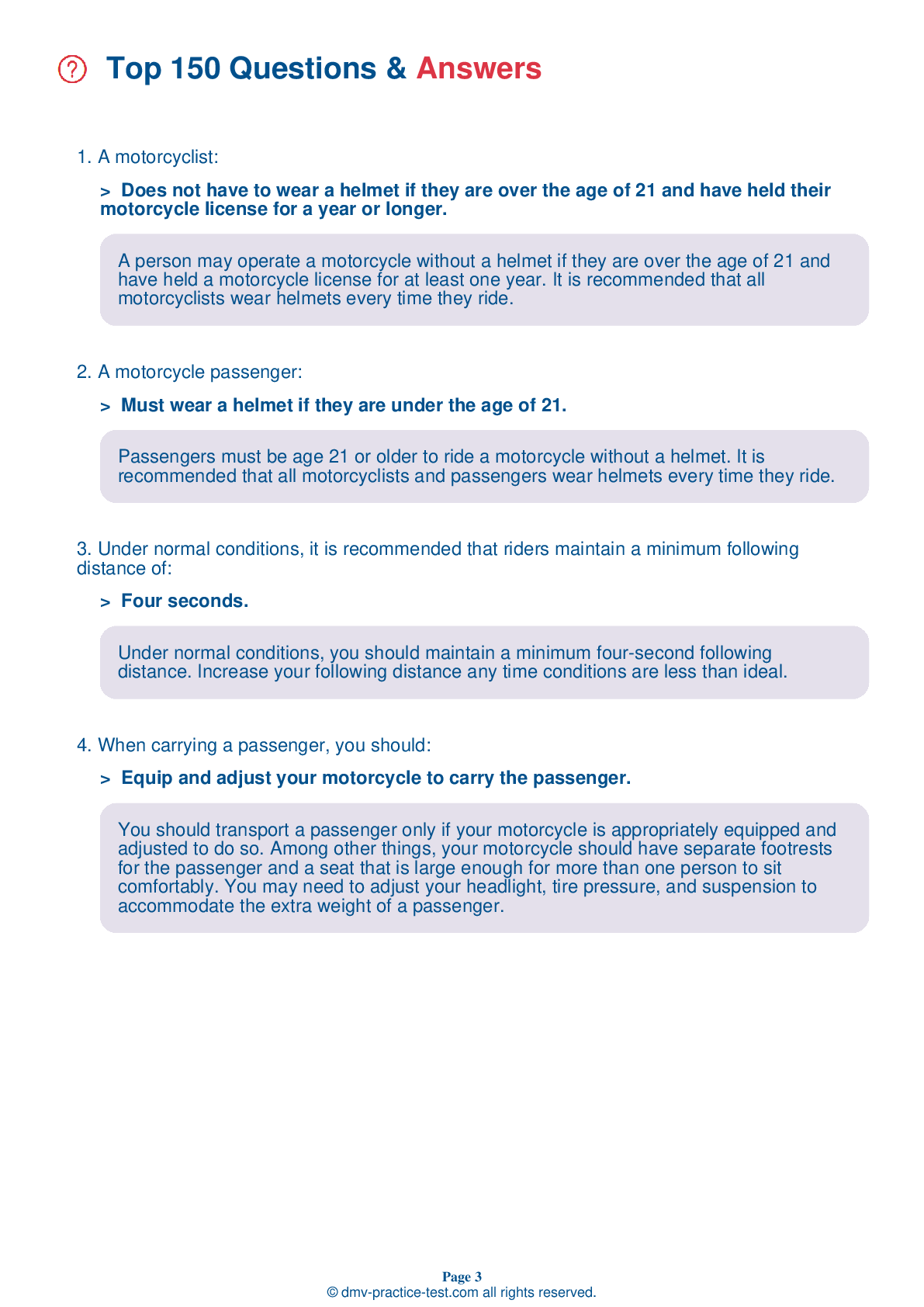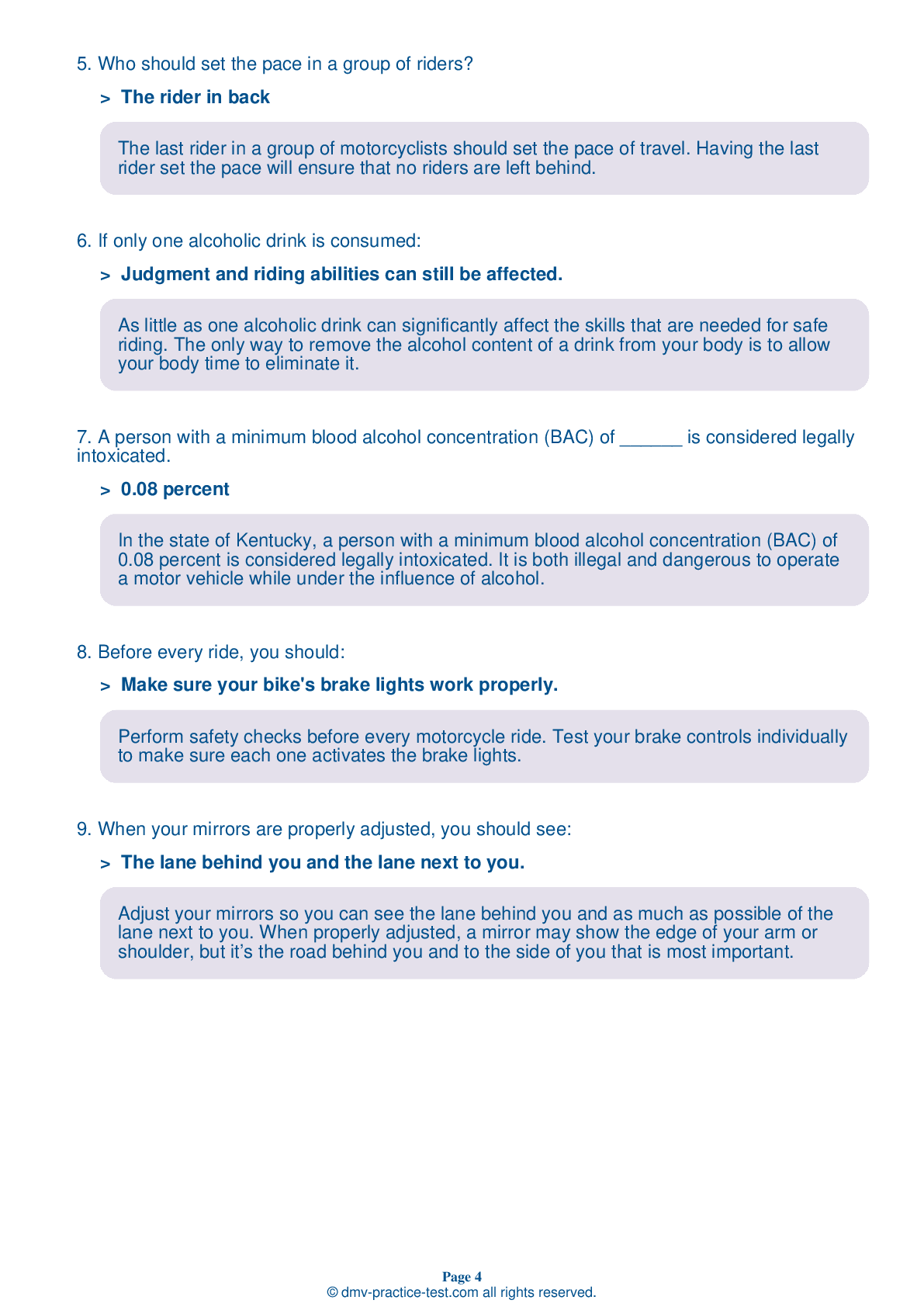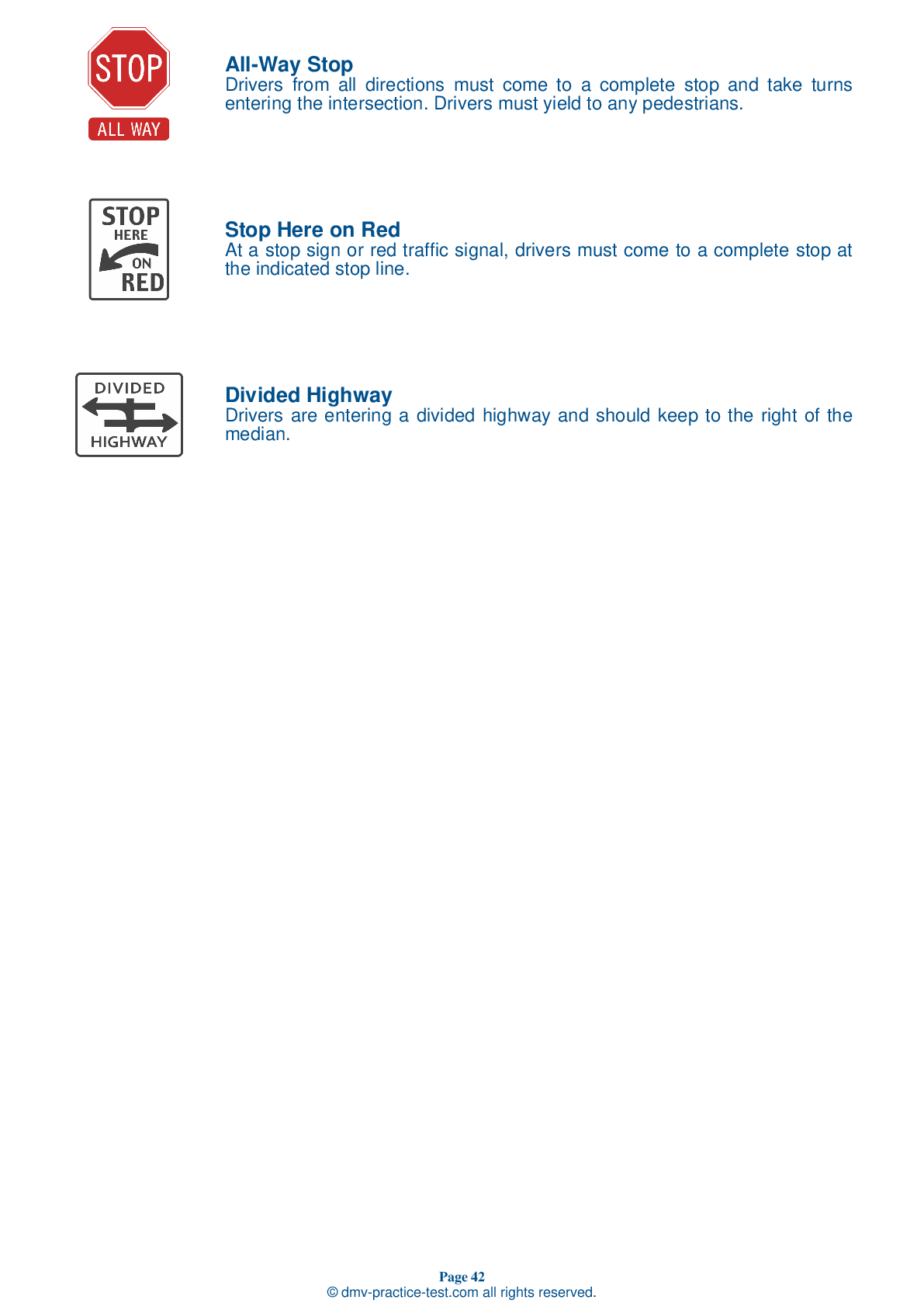Motorcycle Test | License KY 2025 | FREE Online Practice! #14 Page 4 of 4
Take this FREE motorcycle test (license in KY 2025) to check your knowledge of the road rules. To improve your results, download a motorcycle handbook online, study theory, and practice for free on our website. Still worried about how to get a motorcycle license in Kentucky in 2025? Check our website for more sample tests, train as much as possible, and boost your grades!
22 . Maximum straight-line braking is done by:
Maximum straight-line braking is accomplished by simultaneously applying both the front and rear brakes without locking either wheel.
23 . Slippery surfaces can make it difficult to control a motorcycle. Which of the following would be considered a slippery surface?
Wet pavement; roads covered in loose gravel or sand; muddy, snowy, or icy areas; painted lane markings; and metal covers and plates in the road can be slippery surfaces. Motorcyclists should ride with extra caution when riding over slippery surfaces.
24 . Use your mirrors when stopped at an intersection:
When you are stopped at an intersection, use your mirrors to check for cars approaching you from behind. The drivers may not notice you until they are too close and you may need to react.
25 . A motorcycle passenger:
Passengers must be age 21 or older to ride a motorcycle without a helmet. It is recommended that all motorcyclists and passengers wear helmets every time they ride.
26 . Which of the following surfaces is unlikely to provide poor traction for motorcyclists?
A number of surfaces can provide poor traction for tires. Wet pavement; roads covered in loose gravel or sand; muddy, snowy, or icy areas; painted lane markings; and metal covers and plates in the road can be more hazardous for a motorcyclist than dry pavement.
27 . When riding with a passenger, you may need to adjust:
It is a good idea to add a few pounds of pressure to your tires if you plan to carry a passenger. Also, adjust the suspension to handle the additional weight.
28 . When may you not need to increase your following distance?
An increased following distance is needed if your motorcycle will take longer than normal to stop. If the pavement is slippery, if you cannot see through the vehicle ahead of you, or if traffic is heavy and another driver may try to squeeze in front of you, open up to a longer following distance.
29 . When you are being passed, you should:
When being passed, it is generally a good idea to ride in the center portion of your lane. Being on the side nearest the passing vehicle increases your risk of a collision. Being on the side farthest from the passing vehicle may prompt the other driver to merge back into your lane before it is safe.
30 . A way to lower the risk of being involved in a crash is to:
To reduce the risk of being involved in a crash, you should always ensure that you are visible to others. Communicate your intentions through proper use of your signals, brake light, and lane position. Maintain a space cushion around your motorcycle and consistently scan the road ahead of, behind, and next to your vehicle.
See the exact questions that will be on the 2025 Kentucky DMV exam.
99.2% of people who use the cheat sheet pass the FIRST TIME
Jeneen was tired of paying $5/gallon. She got herself a scooter that required the motorcycle license. She studyed the motorcycle test cheat sheet and passed her test the next day!
Christopher tells us how he knew nothing prior to obtaining the motorcycle study guide, and he only got one question wrong because he clicked on the wrong answer by mistake.



